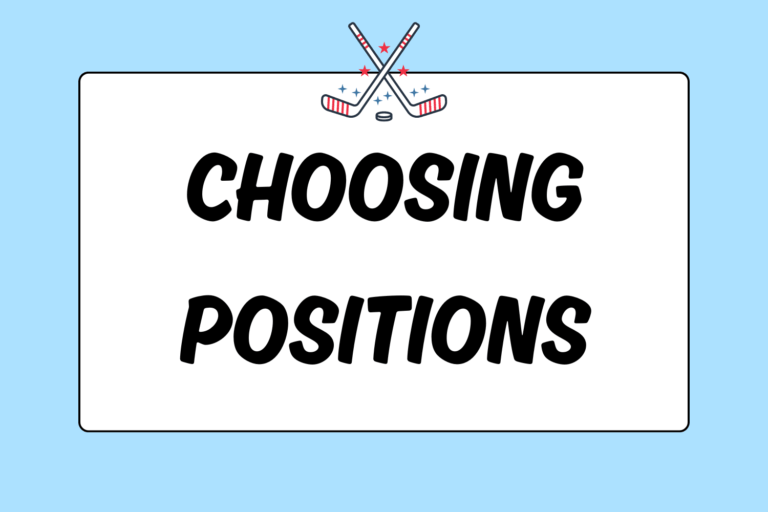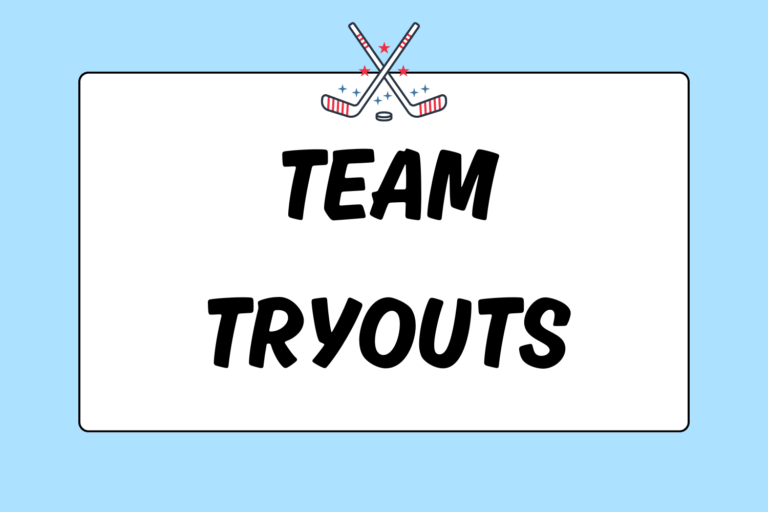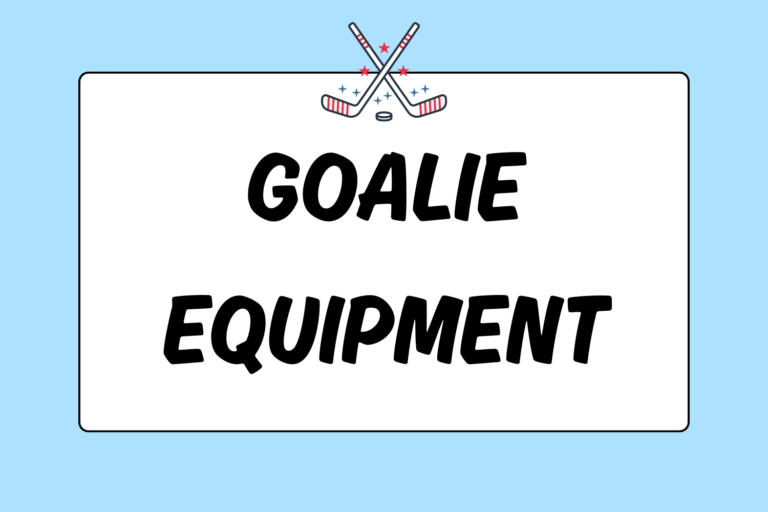As a goalie, your number one objective is to keep the puck out of the goal. However, there are ways that a goalie can more actively participate in the flow of the game – such as:
- Being vocal to your teammates regarding which players to pick up defensively.
- Telling teammates about tendencies you notice in the opposition.
- Shouting out the location of pressuring forecheckers when a teammate has the puck.
However, the single most active thing a goalie can do is play the puck. A goalie who can accurately pass the puck can effectively begin the breakout, and create a strategic mismatch for the other team. If a goalie is capable of making the first pass, he turns the game from a 5-on-5 situation into a 6-on-5 situation, effectively ensuring that someone on his team will be left open for a pass. It’s a slippery slope, though, as misplaying the puck often leads to goals against.
Methods of Passing the Puck
Passing the puck with goalie equipment on can be one of the most challenging aspects of the position. If passing the puck with a trapper glove on one hand wasn’t difficult enough, most goalies use sticks with opposite curves from what they’d normally use if playing another position. It makes sense then, that the technique for passing the puck while playing goalie is different than for normal players. Essentially, there are four proper ways to play the puck as a goaltender.
One-Handed Sweep
With this method, goalies don’t change their hand positioning at all; they merely sweep the puck to a teammate with their stick-hand position at the base of the paddle (where they normally hold it). This method allows the fastest recovery to proper positioning, but doesn’t create enough force for hard, high passes.
Traditional
With this method, goalies slide their blocker hand to the top of the shaft and push against the base of the paddle with their glove hand. This technique is good for long/hard passes, or when lifting the puck off the ice or dumping it out of the zone. It’s the most commonly used method for passing the puck to teammates.
“Turco” Style
Popularized (and named after) NHL goalie Marty Turco, this method has goalies slide their blocker hand to the top of the shaft like in the traditional style, but grasp the top of the paddle with their glove hand (pointing up). With a little practice, this technique is almost as versatile as the traditional style, but even better for playing pucks from the backhand. The only time this style suffers is when goalies try to pass the puck high off the ice.
Flip/Turnover Method
With this method, goaltenders put their glove on top of the butt-end of the shaft, keep their blocker hand down near the paddle, and flip the stick around. The positive of the turnover method is that it allows players to pass the puck while holding the stick how they naturally would if they were skating out. The disadvantages, though, are that it leaves you severely out of position and often forces you to play off the backhand of the stick. This method was more prevalent in the times before goalies had curved stick blades, as the forehand and backhand of the blade is the same on a curveless stick.
Playing the Puck from the Crease
When a goalie makes a save, he essentially has two options: The first option is to cover the puck and wait for the whistle. This leads to a face-off, where his team has roughly a 50/50 chance of regaining the puck. The second option is to attempt to get the puck to a teammate before the ref blows the whistle. If that option is completed successfully, the goalie’s team essentially will get an extra possession. That option also turns the save into both a defensive move and an offensive move. There are several ways a goalie can get the puck to his teammates:
- If the goalie is not pressured at all by the defense after making a save, he can often just uncover the puck and let one of his teammates skate away with it.
- Another option is passing the puck to a teammate with the glove. Usually this entails just sliding it along the ice to someone at the side of the net. Goalies should avoid passing the puck this way to someone in the slot, unless they are sure no one from the other team is pressuring.
- Lastly, goalies can play the puck with their stick and pass it to a teammate. The one-hand sweep is the best tool to get the puck to nearby teammates, while the traditional passing method is best for dishing the puck to mid-ranged teammates or even hitting a streaking forward with a stretch pass.
Playing the Puck Outside of the Crease
Playing the puck while in the crease is pretty straightforward. Playing the puck when the opposition dumps it in behind the net is a bit more complicated. If the goalie has time and skating ability, he should, at the very least, stop the puck behind the net and leave it for a teammate to pick up. If the goalie is more adept at passing the puck, he has several extra options. The traditional and Turco style passes are the best for all of these. The options for playing the puck outside of the crease are:
- Pass the puck along the boards to a teammate in the corners.
- Pass the puck to a teammate in the circles. Be very careful that there is no forechecker if you make this attempt.
- Pass the puck high and hard to a teammate streaking through the neutral zone. This move has a very high degree of difficulty. If done correctly, however, it could lead to a breakaway and a goal … and an assist for the goalie!
- Dump the puck hard and high along the boards. This is done to relieve pressure or buy time for a line change, most often while on the penalty kill. This should only be attempted by strong goalies who are experienced with playing the puck.
Equipment
There are two pieces of equipment that directly relate to a goalie’s ability to pass the puck. The first is the stick. Goalies have become so skilled at playing the puck that the curves and lies on goalie sticks are as diverse as forward sticks. If a goalie has trouble lifting the puck off the ice, he should think about trying out a stick with a different curve/lie.
The second piece of equipment that factors into passing ability is the glove. Modern gloves that are more structured and have flatter faces transfer force better than old-school, soft gloves. Goalies using old gloves that are having trouble passing the puck hard should consider updating their trappers.
Being Part of the Team
Perhaps the most important thing for a goalie while developing his passing abilities is becoming part of the game plan. Goalies should let their coaches and teammates know the exact circumstances for when they will pass and how they will pass. These should be worked on in practice to get the kinks out. A goalie’s teammates should be able to predict how he will play the puck.
Comfort levels and tendencies vary on a goalie-to-goalie basis, but there are still a couple universal rules:
- Defensemen should know to peel off forecheckers and give the goalie a good passing lane. Goalies who have no passing lane are likely to hesitate and be attacked by the forecheckers, leading to bad goals against.
- Goalies should either dump the puck along the boards, or pass to an open teammate. Passing the puck just out of someone’s reach, or several feet away from the boards leaves teammates vulnerable to big body checks. Don’t leave teammates exposed.
Know Your Role
A goalie’s puck-playing ability will give a team an advantage on the breakout. However, you must never forget that you’re primary objective is to protect the goal. Try to expand the tools in your arsenal, but never at the expense of your overall game. Get better at passing the puck in practice before regularly using these skills when the game is on the line.





